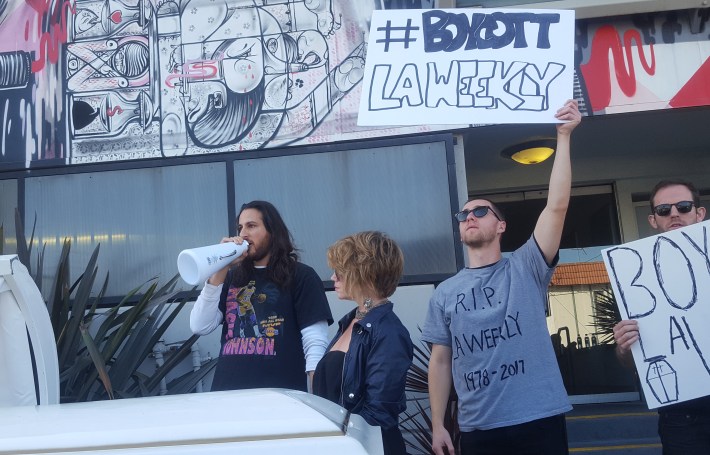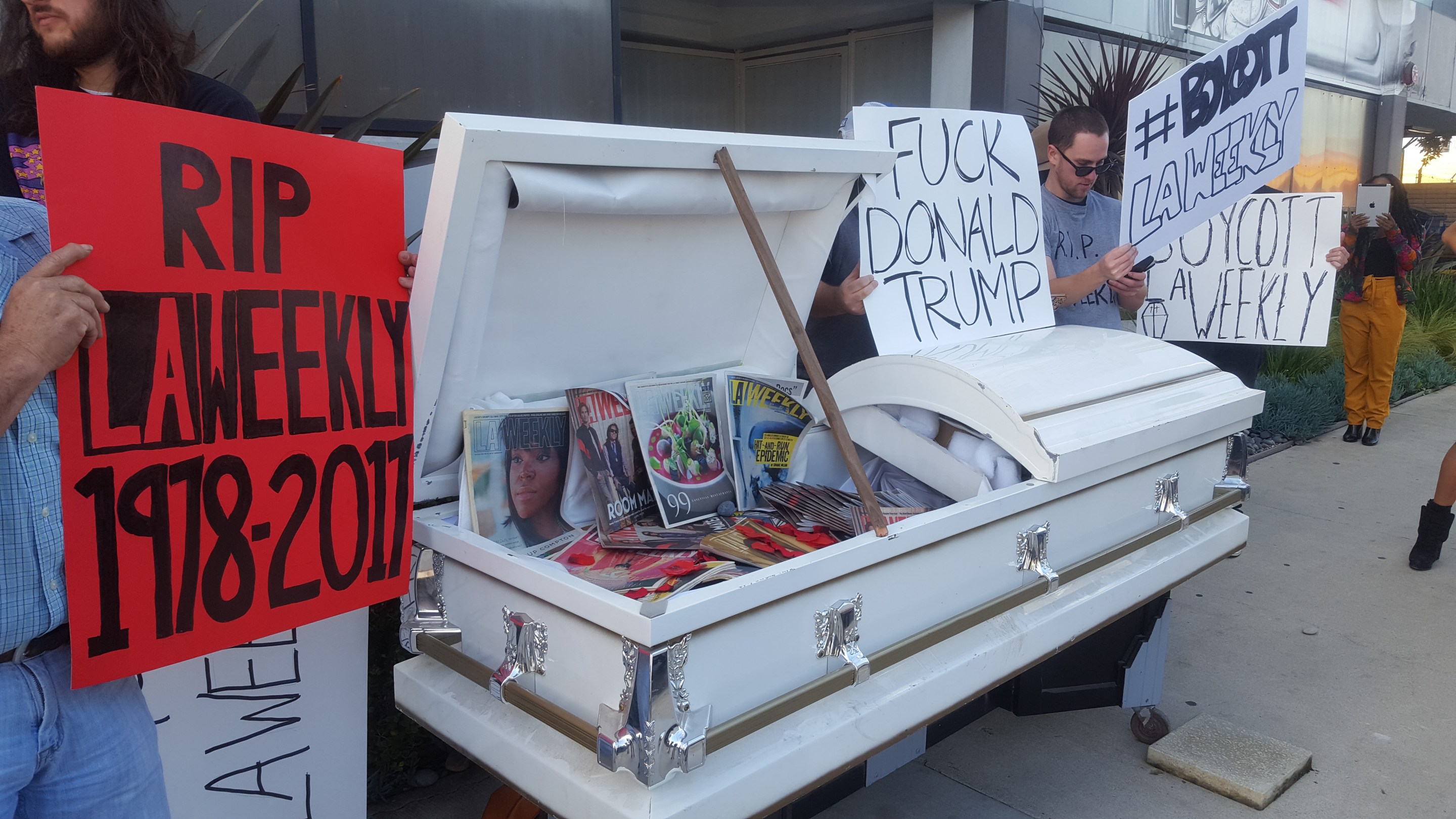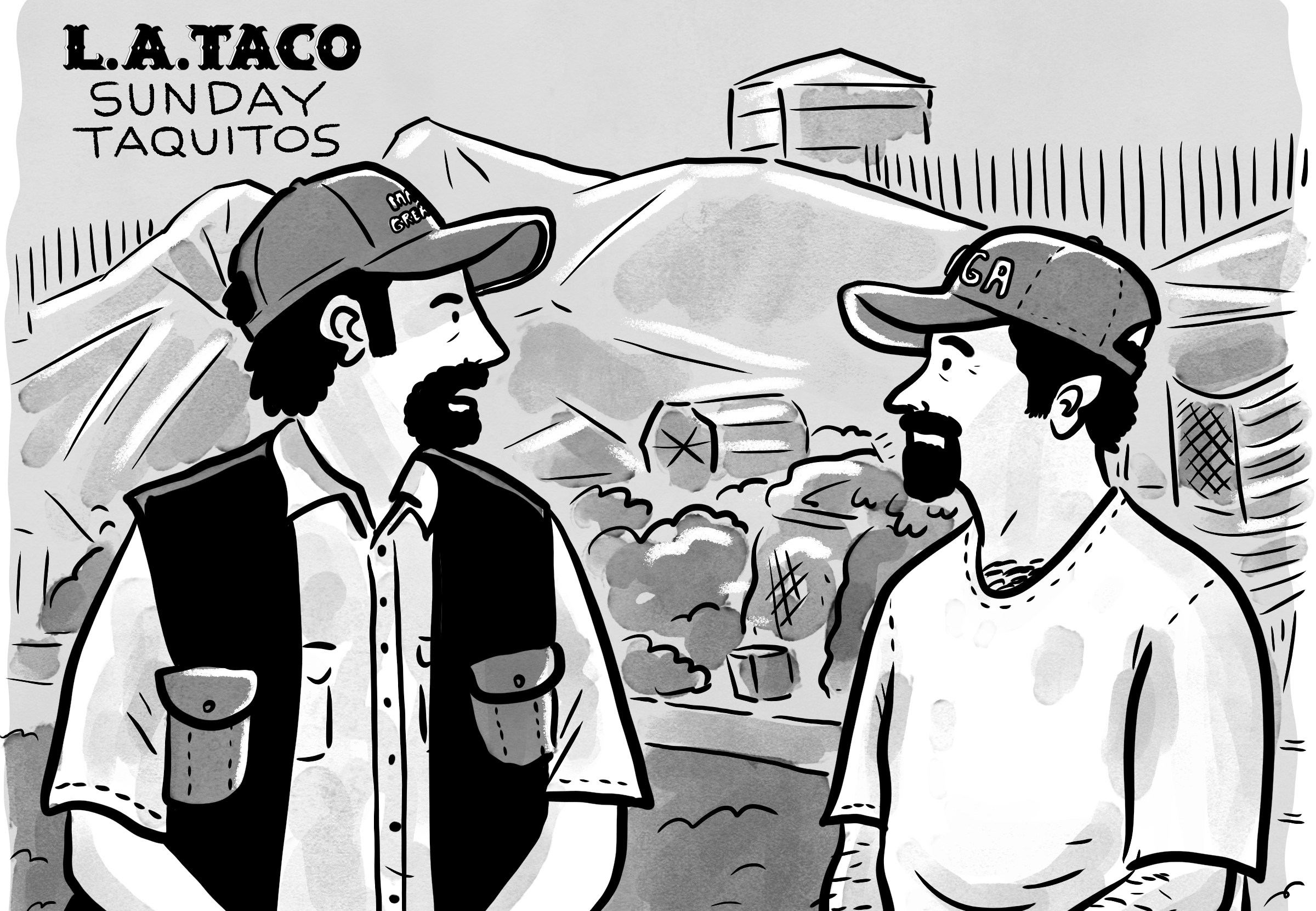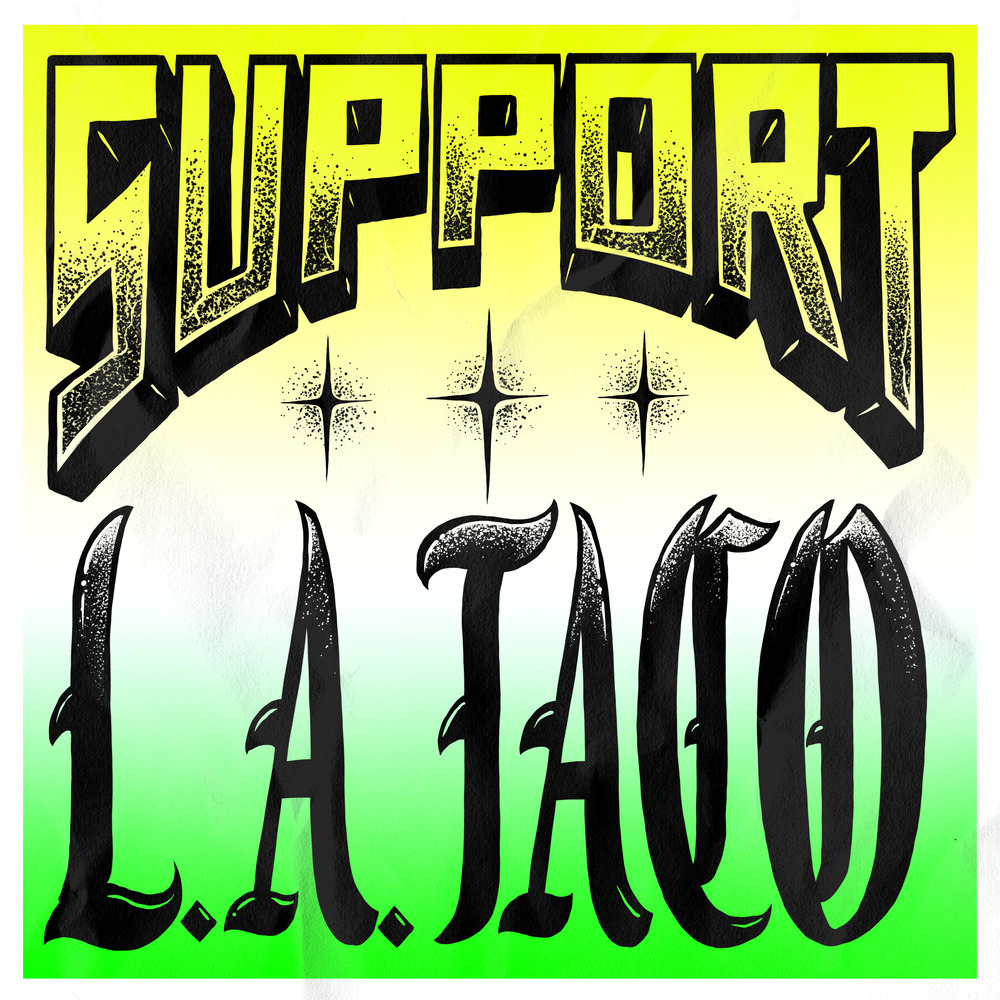Someone in the first-floor window above the protest on Friday outside the LA Weekly’s Westside offices felt the need to put up a sign to clarify to those gathered below. “FYI We Are Not LA Weekly,” read the sheets of white paper. “This Is Vibe.”
Those who pasted it up smiled and waved for a minute down on the sidewalk of Sepulveda Boulevard.
It was a minor gesture of solidarity with about 50 former contributors, columnists, and supporters who gathered on Dec. 8 to stage a mock sidewalk “funeral” for the paper that they say is now more or less dead.
The investment group that bought the Weekly in October fired most of the editorial staff on Nov. 29. Then OC Weekly revealed that most of the known investors were from Orange County and linked to conservative groups or even Trump donations.
Led by former music columnist Jeff Weiss, demonstrators chanted: “Sell the Weekly!” The protesters placed a white coffin outside the paper’s offices and filled it with inky print editions, joined by signs reading “1978-2017” and “RIP.”
Weiss and others are taking a radical gamble in the fight for the soul of local journalism in L.A., calling for a boycott of the Weekly until its new ownership is forced into another sale. The online campaign claimed a big victory when the LA Weekly had to cancel its marquee winter food event, Sips and Sweets, after vendors began fleeing.
Losing Sips and Sweets is likely a massive financial body blow for the new leadership, but on Friday it looked like the owners made the first serious stride to stop the bleeding. Staff writer Hillel Aron, the sole LA Weekly writer or editor who was kept on after the “Red Wedding” layoffs of last week, announced that he accepted the position of interim editor in chief.
“I did so only after the paper’s new owners agreed to several conditions: As editor, I have control of the newspaper’s editorial content,” Aron tweeted. “I [will] be allowed to hire at least two former writer/editors; that our contributors be paid. I also asked that the union representation of the newsroom be permitted to return. The owners have agreed to all these conditions.”
Those conditions, if all applied, were the same that existed before the sale and firings, raising the question of ... why the layoffs at all then?

The boycott campaign shows how deeply the new owners of the LA Weekly misread and underestimated the city — not to mention the core ethical inclinations of many of their own clients.
The face of the new owner group, libertarian op-ed writer Brian Calle, spent most of the week inflaming concerns after a chalkboard-scratching interview on Press Play with Madeleine Brand.
Calle at one point referred to the paper as the “Los Angeles Weekly” (not its name). Brand’s questions forced Calle into insisting he hadn’t fired the dismissed editors and writers technically; their letting-go was simply a function of the sale becoming final. And he was right in a way. The person who was forced to deliver the face-to-face layoffs, former editor in chief Mara Shaloup, had herself just been fired.
At Friday’s protest, Weiss said he and allies were not stopping with Sips and Sweets. Citing the closures and cutbacks at alternative weeklies in cities like Baltimore, Washington, New York, and Seattle, Weiss said the layoffs at the LA Weekly are an attack on local journalism everywhere.
He said the paper deserves to be re-born, without any investors who would actually dare to say L.A. has no serious culture. “I’m not going to take it for L.A., and no one is going to take it!” Weiss hollered. “This is fucking bullshit!”
But with Aron’s announcement, there were signs of some re-congealing with old staff. Dennis Romero, a breaking news staff writer who kept apace of daily developments for years for the LA Weekly, put the Friday protest in the cold-eye perspective of context with a few damning tweets. He was among those laid off last week:
I appreciate freelancers looking out for us, but there are folks making a lot of waves about LAW who had little to almost nothing to do with our daily struggle and who have a lot to gain. These folks are repping hard but barely ever stepped foot into our offices. Beware poseurs.
— Dennis Romero (@dennisjromero) December 8, 2017
After that, Romero added: “There are folks repping LA Weekly vets who have never been to a scrum for us.”
The reporter may have been signaling attendees at the protest outside, or maybe not, but it led to some Twitter sparring anyway.
If Weiss and others keep pressure upon L.A.’s politically sensitive advertisers, the Weekly would enter uncharted territory. And if Aron and any other ex staff members that he can lure back actually manage to correct course under the shaky new bosses, it would be an almost miraculous development in the still unfinished history of the LA Weekly.
After all, reporters have to work.







